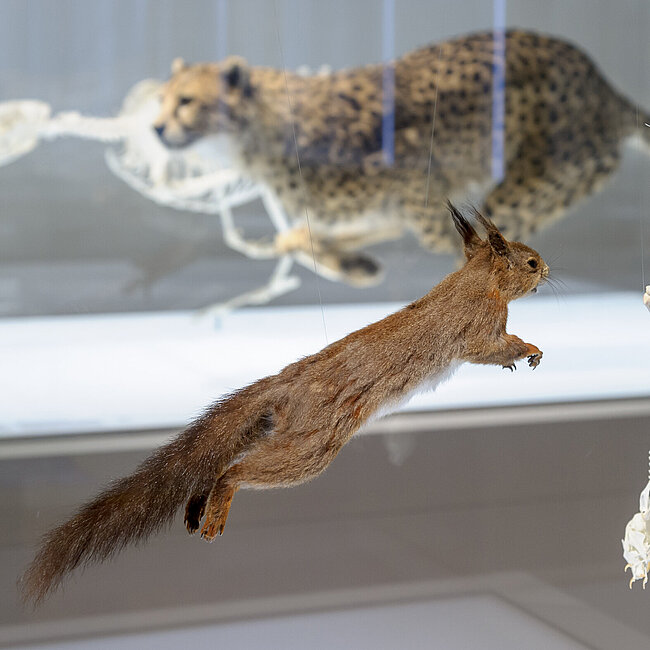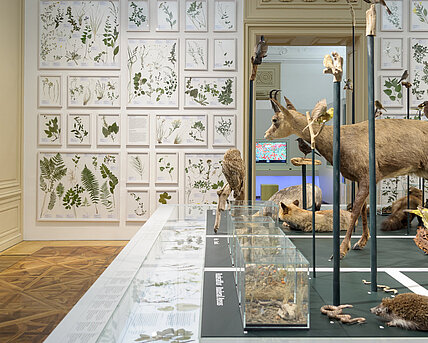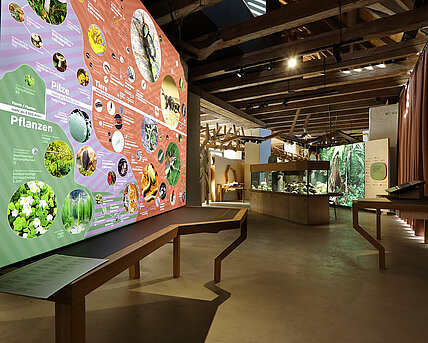Both the buildings and the display rooms were completely renovated as part of the reconfiguration: access to the Natural History Museum is now through the Visitors’ Centre at the Joanneum Quarter. Rearranging the exhibition was sensitively handled by integrating them into the historical building substance; historically popular objects such as the Water Pine or the display mine, which many Styrians remember from earlier visits, have been restored and are on show again. Many rooms that were used as storage depots and offices over many decades are now accessible to visitors for the first time, enabling a larger exhibition area to be available.
The rearrangement covers the whole of the second floor of the Museum’s building in Raubergasse on a surface of over 16,000 square feet. The exhibition areas for the earth and life sciences are arranged in corridors around the large and small courtyard. Every room is devoted to a special theme, and the design creates individual rooms; in so doing, it is not staging that occurs, rather supporting the visualisation of the objects. In addition, the Natural History Museum is construed on the principle of interaction, offering a “workbench” in every room as a chance to actively get involved in the main topic concerned. These stations are conceived to arouse curiosity among our young visitors as much as the adults.
In this way, an interactive museum has been created, in which all those who are interested can find answers to questions which affect their living space and so themselves. In the theme rooms, the geology, palaeontology, mineralogy, zoology and botany collections, both split by specialised disciplines and jointly, provide insight into the geological and mineralogical treasures of Styria as well as the almost infinite variety of life.




























